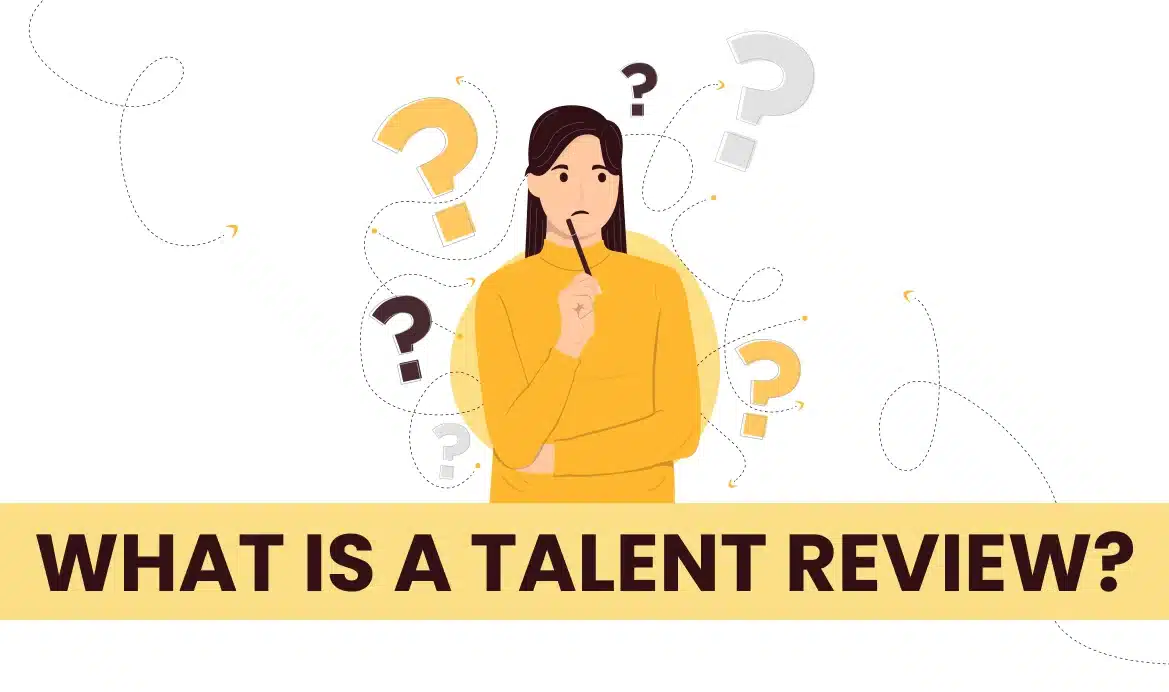Table of content
What is a Talent Review?

What are the Key Components of a Talent Review?
Reviewing a talent is a structured and strategic process that plays a pivotal role in identifying, developing, and retaining top talent within an organization. To execute an effective talent review, several key components must be in place to ensure a comprehensive evaluation of the workforce. These components serve as the foundation for recognizing high-potential employees and addressing critical skills gaps. Here are the essential elements of a review:
Data Collection
The cornerstone of reviewing a talent is data collection. This process involves gathering a wealth of information about each employee, including their skills, performance history, development potential, career aspirations, and any relevant feedback from managers and peers. This data provides a holistic view of each individual within the organization.
Assessment
Once data is collected, HR professionals and managers conduct a rigorous assessment of each employee. This assessment involves a thorough analysis of an individual’s performance, potential, and alignment with the organization’s strategic objectives. It is in this phase that high-potential employees are identified.
Identification
Talent reviews focus on recognizing high-potential employees who demonstrate the capacity to excel in future leadership roles. These individuals possess the skills, attitudes, and motivation required to drive the organization forward. Critical skills gaps within the workforce are also identified during this stage.
Development Planning
After identifying high-potential employees and critical skills gaps, tailored development plans are created. These plans outline the steps needed to help employees reach their full potential. Development initiatives may include training programs, mentoring, job rotations, or other growth opportunities designed to nurture and enhance an individual’s capabilities.
Succession Planning
Talent reviews are closely linked to succession planning. By identifying and developing future leaders within the organization, it ensure that there is a pool of capable individuals ready to step into leadership roles when needed. This forward-thinking approach mitigates the risk of leadership vacuums and maintains organizational continuity.
Ongoing Monitoring
Reviews are not isolated events; they are part of an ongoing talent management process. Regular reviews and updates are essential to adapt to changing business circumstances, evolving talent needs, and new opportunities for development. Ongoing monitoring allows organizations to remain agile and responsive in a dynamic business environment.
In summary, the key components of a talent review include data collection, assessment, identification of high-potential employees, development planning, succession planning, and ongoing monitoring. Together, these components create a systematic and effective approach to recognizing, nurturing, and retaining top talent, ensuring an organization’s long-term success and competitiveness in the ever-evolving business landscape.
5 Ways to Perform Talent Review for Your Employees
Effective review processes are essential for any organization aiming to identify, develop, and retain its most valuable employees. By systematically evaluating your workforce, you can recognize high-potential individuals, address critical skills gaps, and create a talent pipeline for future leadership roles. Here are five methods for performing reviews for talents that can help your organization optimize the talent pool:
360-Degree Feedback Reviews
360-degree feedback reviews involve collecting input from various sources, including managers, peers, direct reports, and the employees themselves. This multifaceted feedback provides a well-rounded perspective on an individual’s strengths and areas for improvement. These reviews assess not only performance but also leadership qualities, teamwork, and interpersonal skills. By gathering insights from multiple angles, organizations can gain a comprehensive view of an employee’s potential and impact.
Succession Planning Reviews
Succession planning reviews focus on identifying individuals who have the potential to step into leadership roles as part of the organization’s long-term strategy. These reviews are forward-thinking and aim to ensure a smooth transition of leadership when needed. Succession planning reviews are especially critical for key positions within the organization. They involve assessing an individual’s readiness, skills, and potential to assume a leadership role in the future.
Calibration Meetings
Calibration meetings are collaborative sessions where HR professionals and managers come together to review and discuss employee performance and potential. This process ensures consistency and fairness in talent assessments. It involves comparing employee assessments, identifying high-potential talent, and addressing any disparities in ratings. Calibration meetings facilitate open dialogue, align talent assessments with organizational goals, and help avoid bias in the reviews.
Competency Assessments
Competency assessments focus on evaluating employees’ skills and competencies in alignment with the organization’s requirements. These assessments aim to identify the specific skill sets and attributes that are vital for success within the organization. By comparing employees’ competencies with the desired standards, organizations can identify both high-potential individuals who possess these skills and areas where skill development is necessary.
Talent Mapping Reviews
Talent mapping reviews involve creating a visual representation of an organization’s talent pool. This mapping helps identify not only high-potential employees but also critical skills gaps within the organization. Talent maps provide a strategic overview of the workforce, enabling organizations to plan talent development, succession, and recruitment more effectively.
Best Practices for Effective Talent Reviews
To ensure the success of your review processes, consider the following best practices:
Data Accuracy
Start by collecting accurate and up-to-date data on each employee. This data should include performance metrics, feedback from various sources, and career aspirations.
Regular Reviews
Reviews should not be isolated events. Regularly scheduled reviews allow organizations to adapt to changing circumstances, evolving talent needs, and new opportunities for development.
Focus on Development
Talent reviews should not be solely about identification. They should also emphasize development planning. Create tailored development plans to help high-potential employees reach their full potential.
Transparency
Transparency is crucial in reviewing talents. Communicate the purpose and outcomes of the review process to employees to foster trust and engagement.
Monitor Progress
Continuously monitor the progress of development plans. Adjust these plans as needed and provide ongoing support to help employees grow and succeed.
Alignment with Strategy
Ensure that the reviews align with the organization’s strategic goals and long-term plans. High-potential individuals should be those who can drive the organization’s vision forward.
Wrapping Up!
In conclusion, performing effective talent reviews is a strategic imperative for organizations seeking to secure their future success. By utilizing various methods such as 360-degree feedback reviews, succession planning reviews, calibration meetings, competency assessments, and talent mapping reviews, organizations can systematically identify, develop, and retain their top talent. The adoption of best practices in the review process is key to creating a comprehensive and dynamic talent management process that can adapt to the evolving needs of the organization and the ever-changing business landscape.

